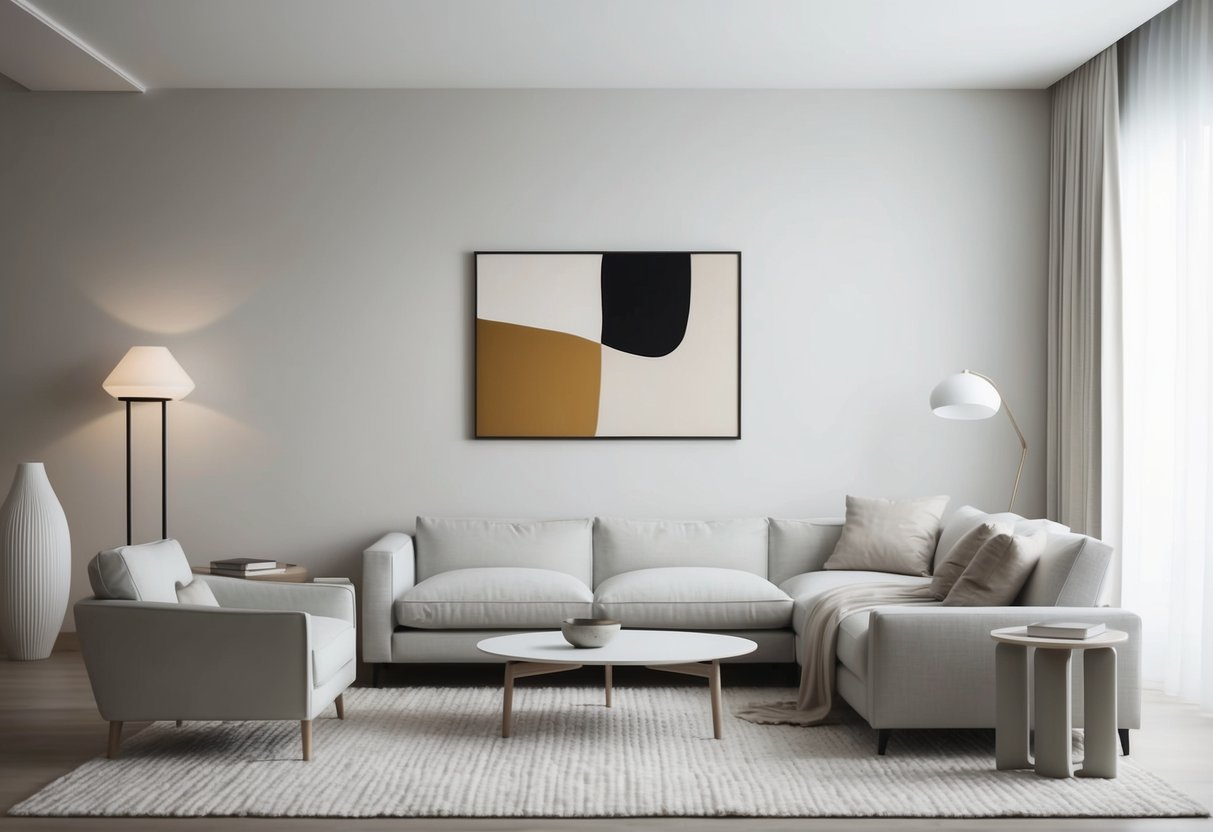Minimalist aesthetics focus on simplicity and clean designs. We often see this style in art, architecture, and everyday objects where less is more. This approach encourages us to appreciate beauty in simplicity and functionality.
By using fewer elements, minimalist aesthetics create a sense of calm and clarity. We can find this style appealing because it helps eliminate distractions and highlights what truly matters.
1) Serene White Spaces
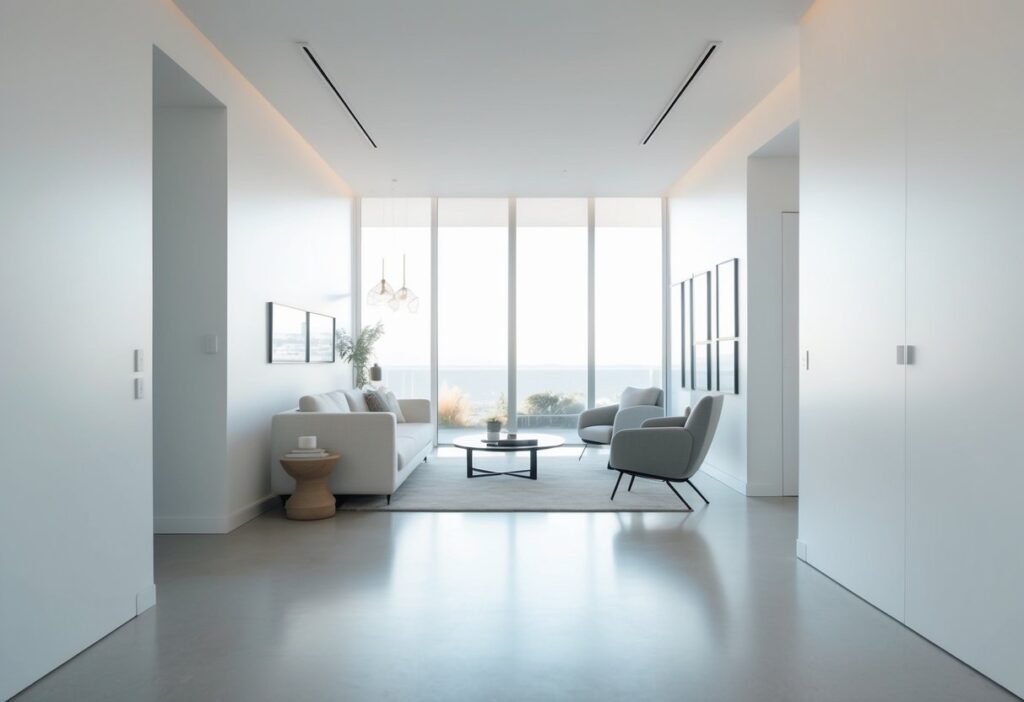
Serene white spaces are key in minimalist aesthetics. They create a calm atmosphere that feels open and uncluttered. These spaces allow our minds to relax and focus.
Using white space means leaving areas empty. This can include walls, floors, and even furniture arrangements. It gives us room to breathe and makes other elements stand out.
White spaces are not just blank; they can also reflect light. This adds brightness to a room and can make it feel larger. Natural light enhances the peaceful feeling we get from these spaces.
In furniture design, clean lines and simple shapes are important. When we choose minimal pieces, they complement the white spaces. This combination helps us appreciate the beauty of simplicity.
In art and design, white space guides our eyes. It allows us to see the details without distractions. This principle applies to both digital and physical designs, benefiting our overall experience.
2) Scandinavian-Inspired Decor
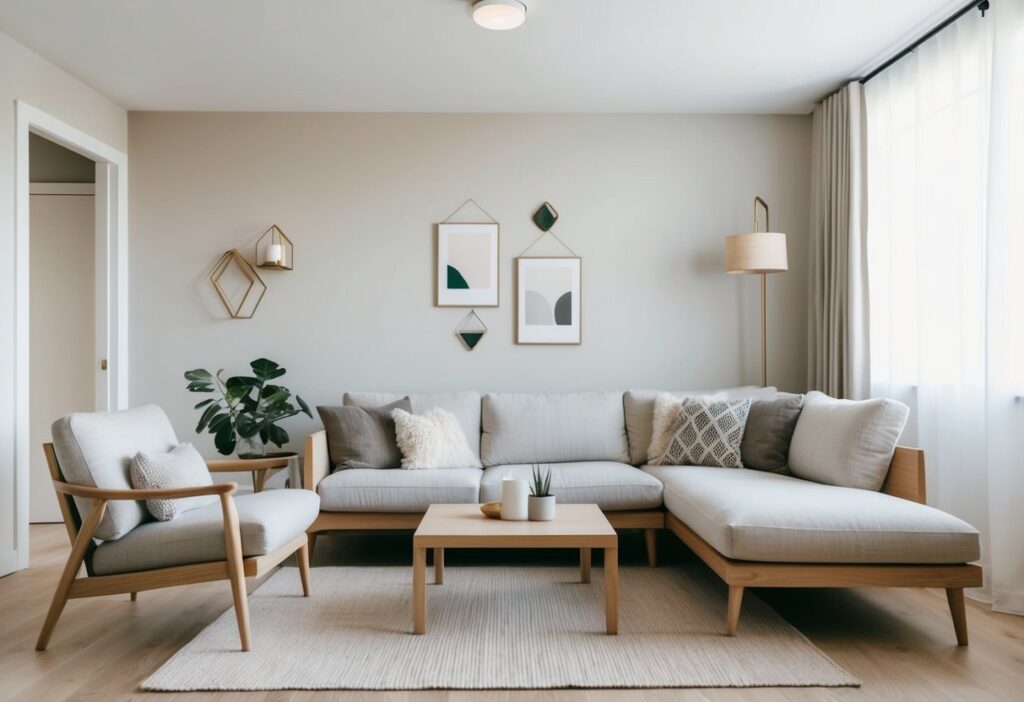
Scandinavian-inspired decor focuses on simplicity and functionality. We find this style combines natural elements with clean lines. It creates a calm and inviting atmosphere.
Light colors are a key feature. We often see whites, soft grays, and light woods that brighten spaces. These choices help create a sense of openness.
Functional furniture is important in this style. We appreciate pieces that are both stylish and practical. Multi-functional items, like coffee tables with storage, are common.
Textiles play a big role too. We use cozy throws and soft rugs to add warmth. Natural materials like wool and cotton are preferred.
Plants are also a popular addition. We bring in greenery to create a fresh environment. They help to soften the clean lines of furniture.
Overall, Scandinavian decor brings together beauty and purpose. It’s a design that makes our spaces feel comfortable and serene.
3) Minimalist Timepieces

Minimalist timepieces focus on simplicity and function. They typically feature clean lines and uncomplicated dials. This makes them easy to read and wear with any outfit.
When we look at minimalist watches, we notice their understated elegance. They often use neutral colors like black, white, or metallic tones. This design choice helps blend them into various styles without being too flashy.
Many of these watches use high-quality materials. Stainless steel, leather, and glass are common choices. These materials enhance durability while keeping the design sleek.
Minimalist timepieces are practical. They have fewer moving parts, which can lead to better reliability. Maintenance is often easier because of this simple design.
Wearing a minimalist watch can reflect a lifestyle that values clarity and purpose. It shows an appreciation for design without unnecessary embellishment. This simplicity often appeals to those who prefer functional elegance over over-the-top accessories.
4) Neutral Toned Bedding
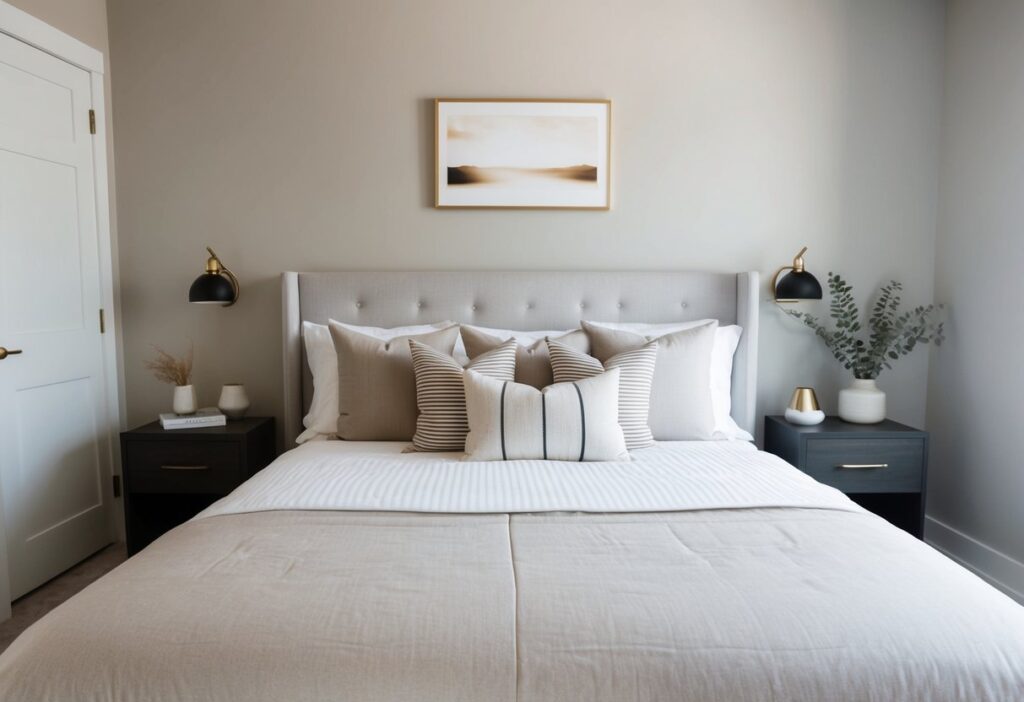
Neutral toned bedding creates a calm and simple environment in our bedrooms. We can choose colors like beige, gray, or soft whites to promote relaxation. These shades blend easily with other elements in the room.
When we use neutral tones, we give ourselves the chance to play with textures. Soft linens or a chunky knit throw can add depth without being overpowering. This balance is key to minimalist design.
Neutral bedding also serves as a great backdrop for accent pieces. We can add colorful pillows or a patterned blanket if we want a splash of color. This approach keeps our space from feeling dull while maintaining a clean look.
Additionally, choosing neutral bedding of minimalist aesthetics makes it easier to switch up our decor. As seasons change, we can effortlessly swap out accessories, keeping the space fresh and inviting. This versatility ensures that our rooms always feel stylish.
5) “Less is More” – Ludwig Mies van der Rohe

Ludwig Mies van der Rohe was a key figure in modern architecture. He is well-known for the phrase “Less is more.” This idea promotes simplicity and clarity in design.
Mies believed that removing excess could create beauty. He focused on clean lines and open spaces. By using fewer materials, he emphasized the essence of architecture.
In many of his works, like the Barcelona Pavilion, we see this principle in action. The use of glass and steel creates a sense of openness. There’s beauty in the straightforwardness that draws us in.
This idea can apply to many areas beyond architecture, including art and lifestyle. We can see how minimizing distractions can help us appreciate what truly matters. It teaches us that simplicity can lead to elegance.
“Less is more” encourages us to focus on quality over quantity. By embracing this mindset, we can create spaces and experiences that resonate more deeply.
6) Japanese Zen Gardens

Japanese Zen gardens, or karesansui, are designed to promote tranquility. They often feature simple layouts with rocks, gravel, and minimal vegetation. These elements invite contemplation and reflection.
We see that the raked gravel represents water, while larger stones symbolize mountains or islands. This design encourages us to connect with nature in a calm space.
Creating a Zen garden involves careful planning and mindfulness. We often use large stones to create focal points, while the raked gravel creates patterns that encourage our thoughts to flow.
These gardens are not just for beauty; they serve as a meditative tool. By focusing on the details, we are reminded to slow down and appreciate the moment.
Zen gardens can vary in size, from small patios to large landscapes. Each garden reflects the personal style of its creator, showing how minimalist aesthetics can lead to deep experiences.
Through their simplicity, Japanese Zen gardens embody the principles of minimalism. They invite us to explore peace through careful observation and quiet thought.
7) Functional Homeware

Functional homeware is key to a minimalist aesthetic. We value items that serve a real purpose and contribute to a tidy space. Each piece should be easy to use and fit our daily needs.
When choosing homeware, we focus on simplicity and practicality. We look for designs that are straightforward, without unnecessary features. This helps maintain a clean and organized environment.
Materials also matter. We prefer durable, high-quality items that stand the test of time. Natural materials like wood, metal, and glass often align with our minimalist goals.
Storage plays a big role in functional homeware. We select items that help us keep our spaces tidy. Baskets, trays, and containers can hold our essentials while looking good.
In the kitchen, we choose tools that are efficient and easy to use. A few well-made utensils can replace a cluttered drawer. We aim for style and function in every choice we make.
By focusing on functional homeware, we create spaces that are both practical and visually pleasing. This approach makes our homes feel more inviting and serene.
8) Clean Lines Furniture

Clean lines furniture is an important part of minimalist aesthetics. We appreciate its simple forms and lack of ornamentation. This style creates a calm and organized space.
The focus is on functionality. Each piece serves a purpose without unnecessary details. This approach allows us to enjoy a clean and uncluttered look.
Materials often include wood, metal, and glass. These materials enhance the sleekness of the furniture. Their smooth surfaces also help to create a sense of openness in the room.
When we choose clean lines furniture, we explore options that complement our space. Sofas, tables, and chairs with sharp edges and straight shapes can fit well in various settings.
This style works equally well in small and large rooms. In small spaces, it can make the area feel larger. In larger rooms, it emphasizes simplicity and elegance.
In the end, clean lines furniture perfectly aligns with minimalist design principles. It allows us to focus on what is essential and enjoy a peaceful living environment.
9) Monochrome Art Pieces

Monochrome art pieces focus on a single color or shades of that color. This style highlights simplicity and clarity. We see how these works can create strong emotional responses.
Using one color allows the artist to explore texture and form. The lack of multiple colors draws our attention to details we might overlook in more complex works.
These pieces can be bold or subtle. A bright red canvas can evoke energy, while a soft blue can bring calmness.
Monochrome art is often found in minimalist galleries. These spaces enhance the impact of the artwork with their uncluttered design.
We can appreciate how these pieces invite us to reflect on our perceptions of color. Each choice made by the artist speaks volumes. Monochrome art challenges us to see beauty in simplicity.
10) Sustainable Materials
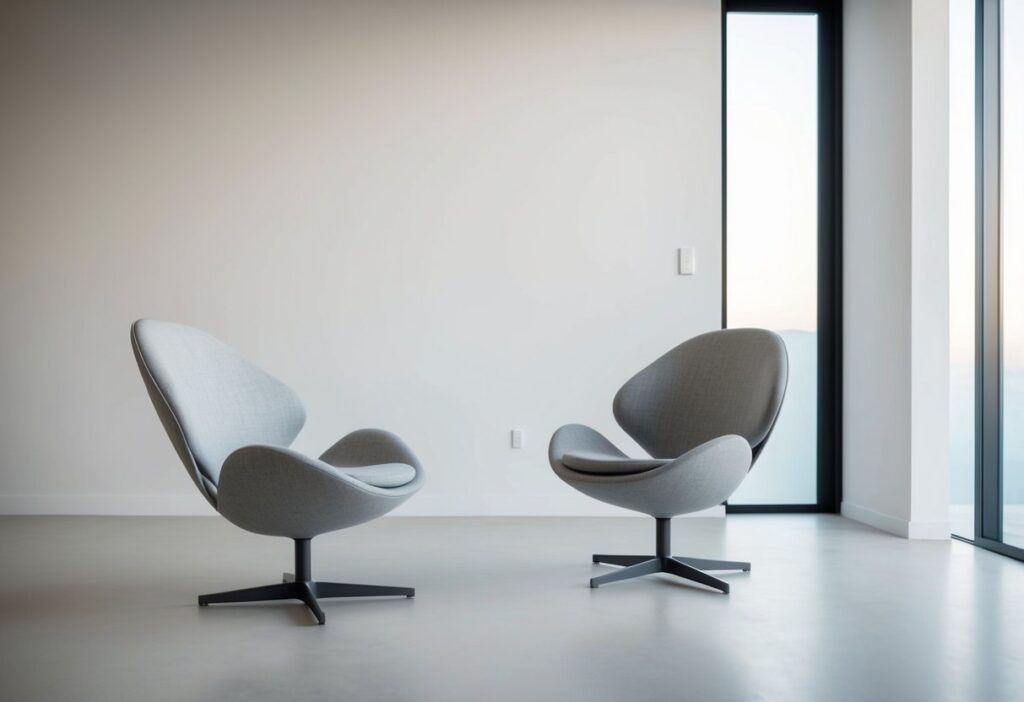
We often focus on using sustainable materials in minimalist design. These materials help reduce waste and lower our environmental impact.
Natural materials like wood, bamboo, and cotton are popular choices. They are biodegradable and have a smaller carbon footprint compared to synthetic options.
Recycled materials also play a crucial role. Using items like reclaimed wood or recycled metal helps keep waste out of landfills. This choice often adds unique character to our designs.
Another option includes using materials made from renewable resources. For example, cork is a sustainable choice because it can be harvested without harming the tree.
We can also consider low-impact synthetics. Materials like recycled plastics are becoming more common in minimalist designs.
Choosing sustainable materials does not mean sacrificing style. We can create beautiful and functional spaces while being eco-conscious. Embracing these options helps us support a healthier planet.
Core Principles of Minimalist Aesthetics

Minimalist aesthetics focus on simplicity and balance. We emphasize essential elements while eliminating distractions. This leads to spaces and designs that are clean, functional, and pleasing to the eye.
Understanding Simplicity
Simplicity is central to minimalist aesthetics. We aim to remove unnecessary details, allowing the main elements to shine. This can be seen in design choices where less is more.
Key Factors:
- Color Palette: We often use neutral colors like white, black, and gray to create a calming atmosphere.
- Form and Function: Each piece must serve a purpose, contributing to the overall design without excess.
By focusing on simplicity, we create environments that are easy to navigate and enjoy, making functionality the priority.
Harmony and Balance
Harmony and balance are crucial for achieving a cohesive minimalist design. We strive to create spaces where visual elements work together seamlessly.
Principles of Harmony:
- Proportion: The size of objects should relate well to each other.
- Spacing: Adequate space between items helps reduce clutter.
When we balance form, space, and color, we achieve a sense of tranquility. This invites relaxation and enhances our experience of the space.
Impact of Minimalism on Design Fields
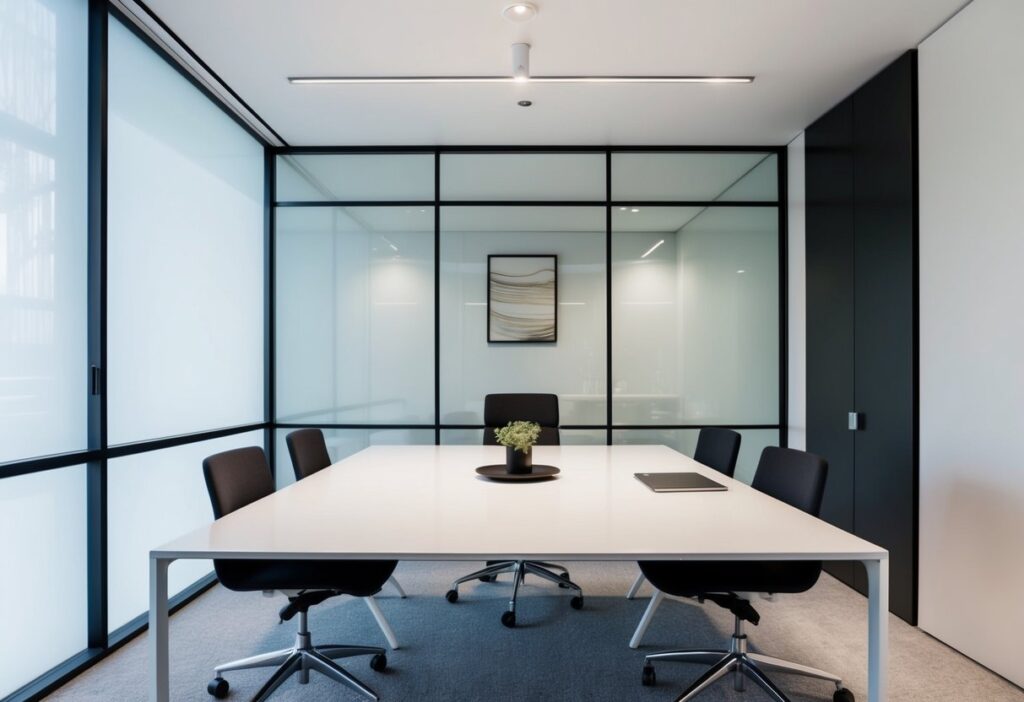
Minimalism has transformed many design fields. We see its influence in architecture and interior design, shaping how spaces are created and experienced. Focusing on simplicity, functionality, and clean lines, minimalism changes how we interact with our environment.
Architecture
In architecture, minimalism emphasizes open spaces and natural light. Buildings often feature large windows and fewer walls. This approach creates a sense of connection between indoors and outdoors.
Materials used in minimalist architecture tend to be natural and unadorned. We see an emphasis on concrete, glass, and wood. This choice promotes a calm atmosphere while highlighting the structure itself.
Designers also pay attention to sustainability. Efficient use of space and resources is key. We often find eco-friendly practices embedded in minimalist designs, making them appealing for modern living.
Interior Design
Minimalism in interior design prioritizes functionality and simplicity. Rooms often lack clutter and excessive decoration. We focus on essential furniture and accessories, choosing items that serve a purpose.
Color palettes are usually neutral. Whites, grays, and beiges dominate, creating a serene environment. We might incorporate bold accessories or art as focal points without overwhelming the space.
Storage solutions play a crucial role. We utilize hidden storage options to keep surfaces clean and organized. This approach makes the home feel spacious and inviting, promoting peace and comfort for those who live there.
Frequently Asked Questions

In this section, we will address common questions about minimalist aesthetics. We will explore how to bring minimalist design into our homes, fashion, and daily lives while considering color palettes, budgets, and the psychological effects of minimalism.
How can one incorporate minimalist aesthetics into home decor?
We can start by focusing on simple furniture and neutral colors. Choosing items with clean lines helps create a serene environment. Additionally, decluttering and limiting decorative items enhances the minimalist aesthetics feel.
What are the defining characteristics of minimalist aesthetics in fashion?
Minimalist aesthetics in fashion is all about simplicity and function. We often select clothing in neutral colors with few patterns. Essential pieces that can be mixed and matched are key to achieving this aesthetic.
In what ways does minimalist design influence lifestyle and personal organization?
Adopting minimalist aesthetics encourages us to prioritize what truly matters. By reducing clutter, we can find it easier to focus on our goals. This design approach also promotes a more organized and peaceful living space.
Which color palettes are most commonly used in minimalist aesthetics?
We often use for minimalist aesthetics color palettes that include whites, grays, and blacks. Earthy tones also fit well within minimalism. These colors create a calm and cohesive look throughout our spaces.
How can one create minimalist aesthetics on a budget?
We can focus on buying fewer, quality items rather than lots of cheap decor for our minimalist aesthetics. Second-hand shopping can also help us find unique pieces. DIY projects can give our spaces a personal touch without high costs.
What are the psychological impacts of adopting minimalist aesthetics in one’s living space?
Living in a minimalist home can reduce stress. A clutter-free environment often leads to clearer thinking. It also allows us to feel more relaxed and focused in our daily lives of minimalist aesthetics.

